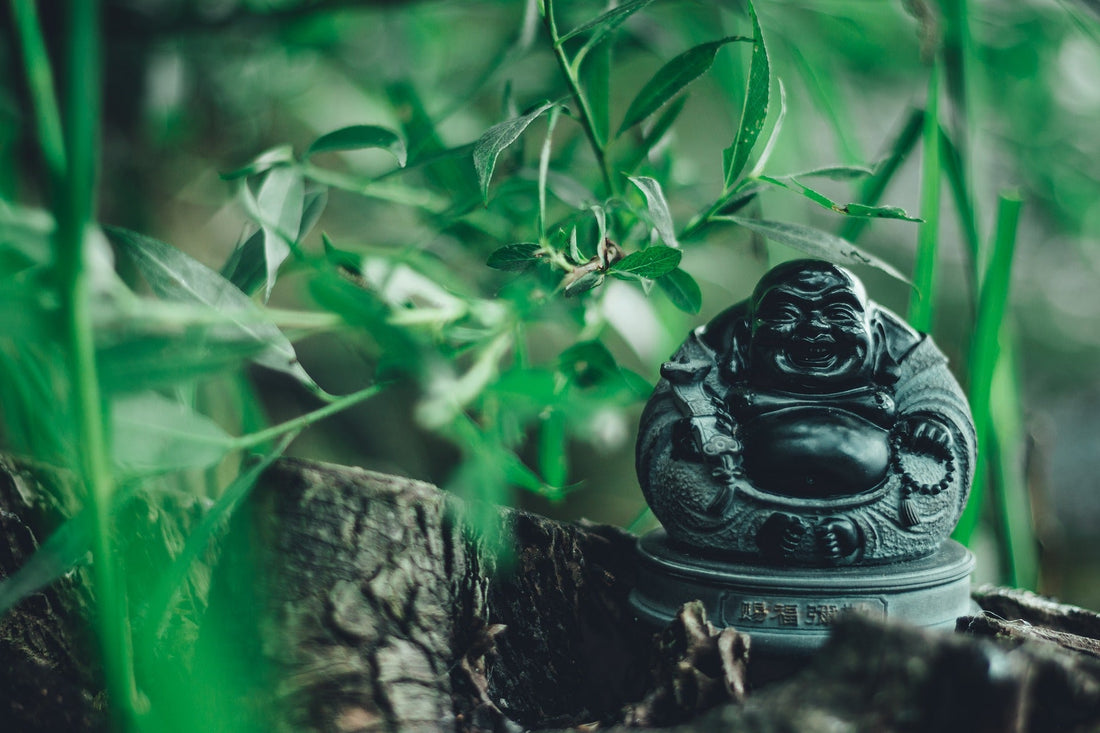How Many Buddhas Are There?
Buddhism is a vast tradition, with the figure of the Buddha at its core. However, the question of how many Buddhas exist is more complex than it first appears. The term "Buddha" refers to a state of enlightenment, and it isn’t reserved for one person, like Siddhartha Gautama, the historical Buddha. Across different Buddhist traditions, many Buddhas exist, each representing unique aspects of enlightenment.
This article will explore the different types of Buddhas, their significance, and what each one embodies in the Buddhist path to awakening.
The Concept of Buddha: More Than Just One Figure
Understanding "Buddha" – A Title, Not a Name
The word "Buddha" is a title, not a personal name. It means "the enlightened one," a being who has awakened to the true nature of reality. As such, "Buddha" applies to anyone who achieves this state of enlightenment, not just Siddhartha Gautama. The term is similar to how the title "doctor" can apply to anyone with the appropriate qualifications, regardless of their specific field.
During my travels in Asia, I’ve observed countless Buddha statues, each representing different interpretations of enlightenment. Whether it’s a towering golden Buddha in Thailand or a quiet, meditative figure in a secluded temple in Sri Lanka, each image is a symbol of the wisdom and compassion that the Buddha represents. These varying depictions highlight the many ways enlightenment can manifest.
The Historical Buddha – Siddhartha Gautama
Siddhartha Gautama, the historical Buddha, is the most recognised Buddha. Born around 563 BCE in Lumbini (modern-day Nepal), he lived a life of privilege until the age of 29 when he ventured outside his palace and encountered suffering in the world. These encounters led him to renounce his royal life and embark on a spiritual quest to find a solution to the suffering he witnessed.
After years of meditation and self-discipline, Gautama attained enlightenment under the Bodhi tree at the age of 35, and became known as "the Buddha," or "the Awakened One." His core teachings, which remain central to Buddhism today, include the Four Noble Truths and the Noble Eightfold Path, both of which outline the nature of suffering and the way to end it.
The Four Noble Truths:
- The truth of suffering (Dukkha)
- The origin of suffering (Samudāya)
- The cessation of suffering (Nirodha)
- The path to the cessation of suffering (Magga)
The Noble Eightfold Path:
- Right Understanding
- Right Intention
- Right Speech
- Right Action
- Right Livelihood
- Right Effort
- Right Mindfulness
- Right Concentration

Different Types of Buddhas in Buddhism
Sammaka Sambuddha: The "Perfect" Buddha
The Sammaka Sambuddha is perhaps the most revered type of Buddha in Buddhist teachings. These Buddhas attain enlightenment completely through their own efforts, without the help or teachings of a previous Buddha. The term "Sammaka Sambuddha" translates to "the perfectly self-enlightened one."
Gautama Buddha is the most well-known example of a Sammaka Sambuddha.
These Buddhas are rare, appearing only once in a world cycle, and their teachings benefit all beings by helping them follow the path to liberation.
During my visit to a monastery in Nepal, I saw a depiction of Gautama Buddha in deep meditation. The monks there explained that Gautama’s enlightenment was not simply for himself but for the benefit of all sentient beings. His journey to Buddhahood was a solitary, difficult one, but it ultimately brought wisdom and compassion to the world.
Pratyekabuddha: The Solitary Buddhas
Pratyekabuddhas, or "Solitary Buddhas," are another form of Buddha, but unlike Sammaka Sambuddhas, they do not share their enlightenment with others. They attain enlightenment on their own, often through introspection and solitude, but they do not teach others how to reach the same state.
Key feature: Pratyekabuddhas do not teach or guide others after attaining enlightenment.
Their wisdom is personal and not shared, meaning they do not create a Dharma lineage like a Sammaka Sambuddha.
I recall meeting a Buddhist monk in a remote Thai forest monastery who reflected on the solitary nature of these Buddhas. He spoke about how, sometimes, true understanding can only arise in solitude—away from distractions and worldly concerns. This personal, inward journey to enlightenment struck me as deeply meaningful in the context of spiritual practice.
Sāvakabuddha: The Disciple Buddhas
Sāvakabuddhas are disciples who achieve enlightenment by following the teachings of a Sammaka Sambuddha. While they attain Buddhahood, they do so by adhering to the path set out by a Buddha who came before them.
Key feature: These Buddhas do not create new paths but follow the teachings of a Sammaka Sambuddha to reach enlightenment.
Gautama Buddha had many disciples who reached this stage, including prominent figures like Ananda and Sariputta, who were key figures in spreading his teachings.
At the Dambulla Cave Temple in Sri Lanka, I saw murals depicting these disciple Buddhas, standing in reverence to the Sammaka Sambuddha. It was a powerful visual reminder that even followers, through dedication and right practice, can achieve the same enlightened state.
Buddhas of the Past
The Buddhavamsa scripture, part of the Pali Canon, records 27 Buddhas who came before Gautama Buddha. These Buddhas are said to have lived in previous world cycles, and each of their teachings helped pave the way for the next. In many Buddhist traditions, these past Buddhas are considered the foundation of the path that led to Gautama's enlightenment.
First three Buddhas: Tanhankara, Medhankara, and Saranankara are the earliest Buddhas in the history of this world cycle.
Dipankara Buddha: An important Buddha who predicted that Sumedha (a past life of Gautama Buddha) would become the next Buddha.
In the Swayambhunath Stupa (also known as the Monkey Temple) in Kathmandu, I observed murals showing the lineage of these past Buddhas. The imagery brought to life the continuity of Buddha's teachings, showing how one Buddha’s wisdom begets the next.
Key Insight: The story of these past Buddhas teaches us that enlightenment is an ongoing, cyclical process, and each Buddha’s teachings continue to inspire those who come after them.

Buddhas of the Future
Maitreya Buddha – The Buddha of the Future
Maitreya is the future Buddha, prophesied to appear on Earth long after the teachings of Gautama Buddha have been forgotten. The concept of Maitreya is deeply embedded in Buddhist teachings, particularly in Mahayana Buddhism, which believes that Maitreya will bring a new era of enlightenment when the Dharma has been lost.
- Maitreya’s arrival: Estimated to come millions of years in the future, Maitreya will be born in a time when the teachings of Gautama Buddha will have faded.
- Maitreya’s teachings: When Maitreya arrives, he will teach a renewed Dharma, bringing a fresh cycle of enlightenment to the world.
I remember sitting in a quiet Buddhist temple in Japan, where a large statue of Maitreya Buddha sat with a gentle smile. This figure is often shown sitting with a relaxed and joyful demeanour, symbolising the hope that he will bring peace and enlightenment to all beings in the future. The idea that Maitreya’s arrival will bring a new beginning for humankind feels like a beacon of hope that transcends time.
Iconography of Maitreya: Maitreya is often depicted with a raised hand, symbolising the act of teaching, or holding a small bowl, indicating his role as a compassionate figure who will offer spiritual nourishment.
Pu-tai (Budai) – The Laughing Buddha
While Maitreya represents the future Buddha, Pu-tai (or Budai), also known as the "Laughing Buddha," is a popular figure in East Asian culture. Although not technically considered a Buddha in the traditional sense, Pu-tai is often associated with Maitreya in Chinese folklore.
- Laughing Buddha: Known for his cheerful, plump appearance, the Laughing Buddha has become a symbol of good luck, prosperity, and contentment.
- Iconography: He is typically depicted with a big belly, which is believed to be a symbol of abundance and joy. His laughter is said to spread happiness and relief from stress.
I’ve seen many statues of the Laughing Buddha in Chinese restaurants, homes, and even gardens. I’ve always thought that the symbolism of laughter and abundance resonates strongly with the community, reminding us not to take life too seriously and to embrace joy, much like Pu-tai’s depiction.
The Endless Forms of Buddha
Buddhism, with its rich history and spiritual depth, offers a diverse understanding of who and what a "Buddha" is. From Siddhartha Gautama, the historical Buddha, to the celestial and future Buddhas, each form reflects a different aspect of the enlightened state. Whether through the self-enlightened Sammaka Sambuddha, the solitary Pratyekabuddha, or the future Maitreya, each Buddha serves a unique purpose in guiding beings on the path to awakening.
As I reflect on my own experiences visiting temples and learning from monks across Southeast Asia, I’m reminded of the vastness and timelessness of the Buddha’s teachings. The different forms and representations of the Buddha aren't just limited to statues or paintings—they are expressions of the infinite possibilities of enlightenment, waiting for us to embrace them in our own lives.
The question of how many Buddhas there are isn’t merely about counting figures; it’s about understanding the diversity and universality of the path to enlightenment. Every Buddha, past, present, and future, embodies the wisdom and compassion necessary to help beings achieve liberation from suffering. Whether in the form of a statue in your garden or a meditative figure in your home, the Buddha’s presence can offer guidance, peace, and profound wisdom to those who seek it.


